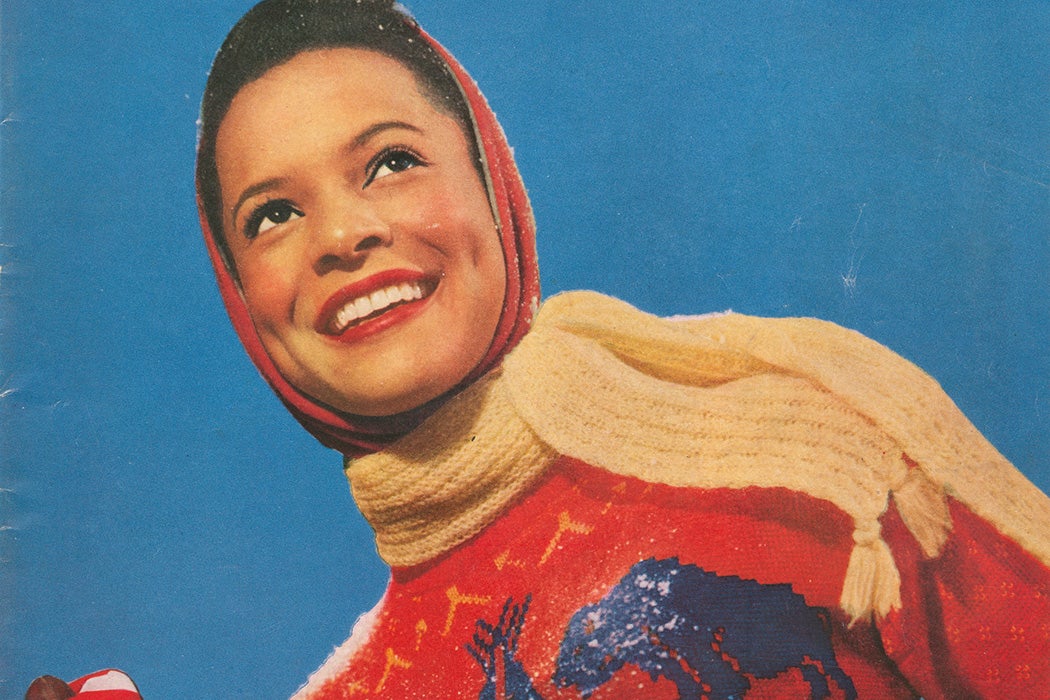When Ebony magazine debuted in 1945, it pulled in readers with a photo of Hollywood star Lena Horne. It’s not surprising that a popular entertainer would be featured in a magazine that, according to publisher and founder John H. Johnson, had a mission to showcase the “whole spectrum of black life.” But that photo of Horne was more than it seemed. It, and the concurrent rise of Black-owned beauty-centered businesses, were all part of a challenge to mainstream standards of attractiveness.
Before World War II, historian Malia McAndrew points out, “popular American culture, including newspapers, radio, and cinema, regularly depicted beauty as necessarily white.” When there were depictions of Black women, they were “presented […] as either a hypersexual ‘Jezebel’ or an unattractive house servant ‘Mammy.’” Horne’s beauty, on the other hand, reclaimed the image of Black women—a process that also included modeling and charm schools that made it their mission to, as McAndrew writes, “change the stereotypical mass representation of black women.”
By the late 1940s, several Black-owned modeling agencies and charm schools had opened their doors, each, as McAndrew writes, “help[ing] to sell a new black ideal.” These businesses believed that image was a key to uplift. Ebony saw this connection as well, writing in its inaugural editorial, “you have to change images before you can change acts and institutions.”
Enterprises like Grace Del Marco Models, founded in 1946 by former model Ophelia DeVore, trained and promoted models who went on to appear in ads for companies like Pepsi and Revlon. Many of these models closely adhered to already established beauty standards. As McAndrew explains, most of them were light-skinned with long straight hair, which “did little to challenge hegemonic white definitions of what looked good.” In 1948, DeVore expanded her business to add a charm school, which provided services called “cultural refinements” for everyday Black women. As DeVore said, “I’ve always believed that the African Americans were talented and equal in every way to any other group. But image is critical for any line of work one wants to pursue.”
Weekly Newsletter
This idea of projecting the right image isn’t so different from what Ebony set out to do. As historian Megan E. Williams explains, Ebony‘s editors focused on “disseminating a version of black femininity that they viewed as uplifting African American readers and educating white readers.” In this way, beauty promoted social change, and for DeVore, economic change. DeVore brought several of her models to Europe to build their careers, which raised both their profiles and their rates. As McAndrews writes, in the late 1940s “the average black model was billed out at $7.50 an hour, half the rate charged for the average white model.” Once she expanded into Europe and saw success there, by the early 1960s, “DeVore could bill even inexperienced black models out at the rate of $15–30 an hour.”
Although many of these early businesses relied on a very narrow definition of beauty, and as McAndrews points out, reinforced many norms about beauty and respectability, they still were part of a huge cultural shift: “because of their hard work, mainstream cultural outlets began to portray women of color as attractive, poised, and professional.”
Support JSTOR Daily! Join our new membership program on Patreon today.







